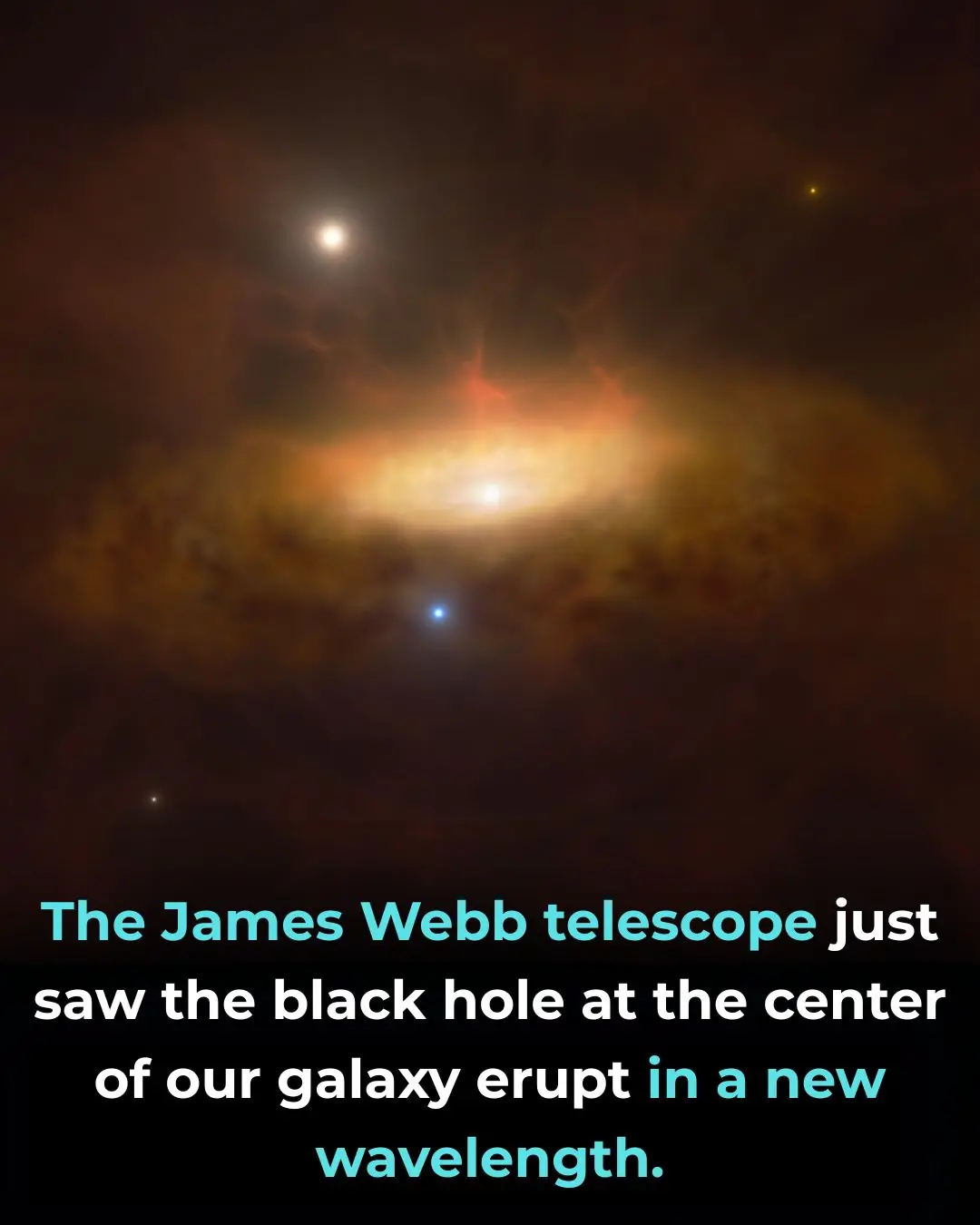
We are receiving strange radio signals from deep beneath the Antarctic ice. No one knows why.
High above the frozen stillness of Antarctica, an instrument designed to listen for whispers from the cosmos picked up something it couldn’t explain. The Antarctic Impulsive Transient Antenna, or ANITA, was launched to detect the faint radio signals emitted by high-energy particles — cosmic messengers traveling across unimaginable distances. But during its flights between 2016 and 2018, it caught something entirely unexpected: radio signals appearing to rise not from the sky, but from deep within the Earth itself. They arrived at angles and with intensities that defied the laws of particle physics as we currently understand them.
For years, scientists have tried to make sense of these anomalies. Could they be rare neutrinos behaving in ways not yet documented? Or are they the result of unknown interactions, strange propagation effects, or even a hint at physics beyond the Standard Model? Despite rigorous analysis, cross-examination with other observatories, and no shortage of speculation, the signals remain officially classified as “unexplained.” Yet rather than write them off, researchers have leaned in — not chasing headlines, but carefully building better tools and expanding their methods in the hopes of uncovering the truth.

The Discovery That Sparked the Mystery
Between 2016 and 2018, a balloon-borne detector called ANITA (the Antarctic Impulsive Transient Antenna), operated high above Antarctica, picked up a series of radio signals that continue to baffle scientists. Designed to detect bursts of radio waves produced when high-energy cosmic particles strike Earth’s atmosphere, ANITA instead recorded signals that seemed to be traveling upward — from deep within the Earth itself. These signals came from steep angles, around 30 degrees below the surface of the ice, an orientation that contradicted all known models of how such particles behave. The phenomenon challenged fundamental assumptions in particle physics: particles capable of generating such signals should not have been able to pass through thousands of kilometers of dense rock without being absorbed or scattered.
At first glance, these signals raised hopes that they might be evidence of high-energy neutrinos, ghost-like particles that are known for their ability to traverse vast distances through matter without interacting. As Stephanie Wissel, associate professor of physics at Penn State and part of the ANITA research team, explained, neutrinos are incredibly difficult to detect, but also incredibly valuable; they can carry pristine information from some of the universe’s most extreme and distant events. However, further investigation suggested the anomalies were unlikely to be caused by neutrinos. The signals not only arrived from unusual angles but also lacked the secondary patterns typically expected from known neutrino interactions. Wissel and her colleagues determined that, under current models, such particles should not have survived the journey through Earth to reach the detector, adding yet another layer of mystery.
To corroborate the findings, scientists cross-referenced data from other major detectors like IceCube in Antarctica and the Pierre Auger Observatory in Argentina — facilities specifically designed to capture high-energy particles including neutrinos. Neither registered anything resembling the anomalous events detected by ANITA, a discrepancy that narrowed the field of potential explanations. While the results do not confirm the presence of new particles or physics, they also cannot be easily dismissed as errors or background noise. The signals remain officially classified as “anomalous,” and nearly a decade later, their origin is still unknown. As Wissel noted, while many ideas have been explored, including the possibility of rare radio propagation effects or even unknown physical interactions, the scientific community continues to investigate without a definitive answer in sight.

How Neutrino Detection Works — and Why Antarctica Is the Ideal Lab
Detecting neutrinos is one of the most technically demanding challenges in modern astrophysics. These particles are electrically neutral, nearly massless, and interact so weakly with matter that trillions pass through our bodies every second without leaving a trace. But when a high-energy neutrino does interact — especially in dense materials like ice — it can produce a cascade of secondary particles, releasing a burst of radio waves known as a particle shower. Instruments like ANITA are designed to detect these brief radio flashes. Suspended from high-altitude balloons, ANITA’s antennas scan vast stretches of the Antarctic ice sheet, listening for the telltale radio emissions of a rare neutrino interaction. The system essentially functions as a telescope for invisible particles, looking downward instead of up, and monitoring an ice surface that acts as both target and amplifier.
Antarctica offers a near-perfect environment for this kind of detection. The continent’s thick, stable ice sheet provides an ideal medium for neutrinos to interact and generate signals, while its geographic isolation minimizes interference from human-made radio noise. The clean radio environment is crucial because the signals scientists are trying to detect are extraordinarily faint. Stephanie Wissel and other researchers working on ANITA emphasize that even a single well-documented neutrino interaction can yield invaluable information, potentially shedding light on cosmic events that occurred billions of years ago and across unimaginable distances. Neutrinos can travel virtually undisturbed from the edge of the observable universe, carrying data that photons or other particles could not preserve.
ANITA’s balloon-borne design also allows it to cover a massive observational footprint, sweeping over hundreds of thousands of square kilometers of ice during each flight. The detectors onboard are tuned to differentiate between different types of showers: those occurring in the ice and those that emerge into the atmosphere. Special attention is paid to tau neutrinos, which can interact in the ice to produce a tau lepton — a secondary particle that escapes the ice and decays in the air, generating a detectable air shower.
These unique events are modeled extensively through simulations and cross-checked with other instruments. When everything lines up — angle, timing, and energy — researchers can begin to back-trace the signal to its potential origin. The anomalous signals recorded by ANITA, however, defy that traceability, arriving at angles too steep to conform to known particle trajectories. Despite years of modeling and simulations, the data continues to resist easy classification, making Antarctica not just a passive landscape but an active participant in one of physics’ enduring enigmas.

What Makes These Signals Truly Anomalous
While neutrino detections are rare by nature, what sets the ANITA signals apart is not merely their scarcity but their defiance of physical expectations. The radio bursts captured during ANITA’s flights did not behave like signals from known particles. Their steep upward angles suggest a path through thousands of kilometers of Earth — a journey that, according to current models, should have extinguished any such signal long before it reached the detector. The particles believed to be responsible would have had to pass through solid rock and ice without interacting, then somehow create a strong, clear signal as they exited. This is not only statistically improbable but, under the rules of standard particle physics, virtually impossible.
Researchers ruled out more mundane explanations early on. They accounted for noise, reflected signals, and potential interference from known cosmic rays or background radiation. The team ran extensive simulations, comparing the events with thousands of modeled particle interactions, and cross-checked against data from other detectors such as IceCube and the Pierre Auger Observatory. Neither of these experiments — both of which have years of exposure and are sensitive to similar phenomena — observed anything like what ANITA recorded. This absence of corroboration makes the ANITA detections harder to dismiss, but also more perplexing. If the signals were due to known neutrinos, they should have appeared elsewhere; if they were instrumental glitches, they should not have matched such a consistent profile.
The possibility that these signals represent some form of new physics was considered early on. Some speculated they might be evidence of unknown particles, or even hints of interactions involving dark matter. However, subsequent reviews and experiments have not produced confirming evidence to support these more exotic interpretations. As Stephanie Wissel pointed out, the lack of repeated observations by other detectors limits how far scientists can push those theories. Instead, the working consensus among many researchers is that the anomalies could stem from an as-yet-unidentified atmospheric or geophysical phenomenon, or a radio propagation effect specific to the ice and horizon geometry of Antarctica. Despite multiple avenues of inquiry, no clear mechanism has emerged. The result is a scientific stalemate — one that continues to challenge assumptions and spark new lines of inquiry.

The Next Frontier: A New Generation of Detectors
The enduring mystery of ANITA’s anomalous signals has galvanized a new wave of research, aimed at building more sensitive instruments and refining the tools available to cosmic particle hunters. Among the most promising efforts is the Payload for Ultrahigh Energy Observations (PUEO), a next-generation balloon experiment being led by physicist Abigail Vieregg at the University of Chicago, with collaborators across major U.S. institutions, including Penn State. Scheduled to fly over Antarctica, PUEO builds directly on ANITA’s design but incorporates major upgrades in sensitivity, signal resolution, and directional accuracy. Its mission is clear: to capture clearer, more numerous signals and help determine whether the puzzling detections from years past were rare statistical outliers, misunderstood background events, or genuine signs of new physical phenomena.
One of PUEO’s key improvements lies in its enhanced ability to isolate weak radio emissions from background noise. In a detection environment where even one true signal can hold cosmic significance, increasing the signal-to-noise ratio is critical. Stephanie Wissel, whose team at Penn State is involved in designing instruments for the project, notes that improved detector geometry, refined electronics, and better modeling tools will allow PUEO to discriminate between different types of particle showers with far greater precision. The system is being designed not just to confirm or refute ANITA’s findings but to create an entirely new dataset that will inform the next generation of particle physics research. It represents a shift in both scale and sophistication — a leap forward intended to match the growing complexity of the questions scientists are now asking.
Beyond hardware, these new missions also reflect a deeper change in how scientists approach unresolved anomalies. Rather than rush to conclusions or dismiss unexplained results, researchers are investing in long-term, collaborative solutions that embrace uncertainty as a catalyst for discovery. The design of PUEO and other projects acknowledges that capturing rare events may require enormous observational exposure and meticulous calibration. With data from instruments like IceCube, the Pierre Auger Observatory, and now PUEO being integrated into cross-referenced frameworks, the field is moving toward a more holistic view of how ultrahigh-energy particles travel, interact, and signal their presence. Whether or not the ANITA anomalies ever receive a definitive explanation, they have already had a lasting impact by sharpening the questions and elevating the science behind neutrino detection.

Why Scientific Mysteries Like This Matter
Unresolved findings like the radio signals detected by ANITA may appear, at first glance, to be technical curiosities — statistical blips or fringe anomalies best left to theoretical specialists. But in science, especially in fields like astrophysics and particle physics, such outliers often serve as the seeds of transformative breakthroughs. These signals remind us that our models of the universe, no matter how sophisticated, are still approximations — maps, not the terrain. As Stephanie Wissel and other researchers have emphasized, the pursuit of elusive signals like these isn’t just about finding answers; it’s about refining the questions. Even when anomalies resist interpretation, they expand the frontier of what we know and highlight the edges of what we don’t.

Continued investment in cutting-edge detection technologies — from balloon-borne observatories over Antarctica to deep-ice arrays like IceCube — reflects a broader commitment to curiosity-driven science. These projects are complex, costly, and often yield sparse results. Yet each faint signal collected, each unexpected result, carries the potential to rewrite chapters of fundamental physics. In the case of the ANITA anomalies, the mystery has already prompted stronger international collaborations, more robust detector design, and renewed attention to the subtleties of radio wave propagation through ice and rock. The upcoming PUEO mission embodies this ethos: a patient, methodical pursuit of truth that acknowledges how little we may yet understand about the universe’s most energetic and mysterious particles.
Ultimately, scientific anomalies are not roadblocks — they are signposts. They point to the limits of current understanding and invite us to imagine what lies beyond. Whether ANITA’s strange signals turn out to be the first glimpse of new physics or a misunderstood artifact of nature’s complexity, the effort to investigate them is already a meaningful endeavor. In a time when easy answers are often preferred over difficult questions, there is something quietly powerful about letting a mystery remain open — not indefinitely, but long enough to learn from its silence. The unknown, after all, is where science does its most important work.
News in the same category


Medicine Breaks New Ground as Ultrasound Builds Tissue Without Surgery

A Heartbreaking Survival Trick: How a Stray Cat Learned to Hide His Pain

Bears Turn Honey Theft Into a Surprising Taste Test in Turkey

Scientists Say Your Butt Shape May Say More About Your Health Than You Think

The Rare Condition That Makes Human Bones Slowly Vanish

A Hidden Consequence of Tick Bites You Should Know About

Smoking, Obesity, and Hypertension: The Leading Risk Factors for Kidney Cancer

When Blue Wings Return: A Second Chance for the Spix’s Macaw

Three Friends, One Hive, and a Very Bad Idea

Measles Cases Hit 30-Year High in the US, Raising Urgent Public Health Concerns

Why Skipping Housework on New Year’s Day Might Bring You Good Luck

Millie Bobby Brown’s Reaction to Eleven’s Ending Goes Viral After Stranger Things Finale

Baby Name Expert Predicts the Most Popular Naming Trends for 2026

No Fines, No Enforcement: How Trust Worked During Japan’s Toll System Failure

This “Easy” Puzzle for Kids Is Completely Stumping Adults

Beavers Build a Dam in the Czech Republic, Solving a Years-Long Environmental Problem

Social Media Users Agree on the Most Painful Physical Experience — and It’s Not What You’d Expec

James Webb Space Telescope Reveals Hidden Mid-Infrared Flares from the Milky Way’s Central Black Hole

New Vision Correction Technique Reshapes the Cornea Without Surgery
News Post

Four Vegetables That Help Protect the Body Against Cancer Cell Damage

Most do this wrong. 10 bathroom habits you’re doing wrong

Flex Alexander Reflects on Role as Michael Jackson in 2004 Biopic, Says Singer Hated the Film

Brian McKnight Allegedly Rejected Dying Son Niko's Plea For Love

Cary-Hiroyuki Tagawa Dies: ‘Mortal Kombat’, ‘Last Emperor’ & ‘Man In The High Castle’ Actor Was 75

Ray J Accused of Owing 6-Figure Debt Days Before Arrest Over Alleged Threats to Ex Princess (Exclusive)

DJ Quik’s Son Convicted of 2022 Murder

Plantago Lanceolata: Powerful Health Benefits, Medicinal Uses, and Natural Remedies

Benefits and Uses of Taro (Colocasia esculenta)

9 Things About Bledo Blanco (Amaranthus albus)

10 incredible ways to use dandelion

50 Cent Believes Diddy Sent Him A Bouquet As A Warning Shot For Documentary

When frying fish, don't just add oil; add this ingredient to make the fish golden and crispy, without falling apart.

3 tips for baking sweet potatoes that are incredibly sweet and juicy.

When boiling shrimp, should you use boiling water or cold water? Turns out I've been doing it wrong all along, no wonder the shrimp were tough and dry!

When steaming sweet potatoes, don't put them directly into the pot; adding this step will make them surprisingly delicious and sweet.

How to remove grease odors from the kitchen using just a bowl of water, no range hood needed.

I had no clue about this

Put lemon and baking soda in a glass and place it in a room you frequent. Here’s why
